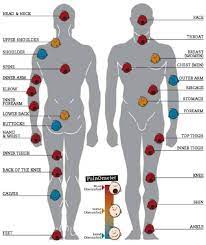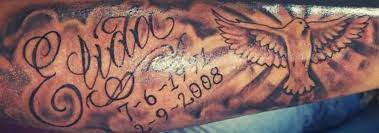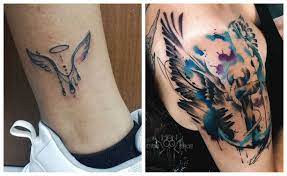

Tattoos can look fantastic when done correctly, but wrong placement can quickly diminish their beauty. That is why clients must select an ideal spot on their bodies before getting tattooed!
Tattoos can be applied to numerous body parts. Some areas are more sensitive to pain than others. Lips, hands, and feet have more nerve endings and rank higher on the pain scale. Tattoos near bones or thin skin also tend to cause more significant discomfort.




Each part of your body contains muscles that cover bones. Tracing these muscle groups reveals a grid of offset perpendicular lines that constantly change with movement as muscles stretch and contract, potentially altering the skin above them.
Tattoo designs should consider this constant variable when planning and mapping out a tattoo design and placement plan. A tattoo on an upper arm, for instance, may move slightly left or right with just one stretch of the hand; its placement will also shift with weight gain/loss/age changes; therefore, prioritization must be given when making this kind of permanent commitment to any part of one’s body.
Tattoos come in all forms; each style works better on certain body parts than others. Quotes and verses look best on arms, rib cages, chests, and wrists, while flower and mandala designs work wonders on wrists.
Tribal tattoos tend to be dark in hue, featuring intricate patterns. On the other hand, new school Tattoos resemble comic book artwork with solid lines. Biomechanical pieces feature organic and geometric elements that flow with the curves of human bodies for a genuinely custom tattoo experience.
Neck tattoos can be bold or delicate and are an increasingly popular choice among women seeking designs easily concealed by long hair. While getting one on your neck requires having your artist stretch the skin over Adam’s apple area, which may increase pain levels for some individuals, shoulder and calf Tattoos tend to stay put without too much stretching during application.
Tattoo placement options vary. While visible tattoos allow you to show them off, others prefer having the option of hiding them with clothing or when needed. Some employers may not accept employees with tattoos, so selecting a placement that can easily be covered may also be advantageous. Use an app with augmented reality capabilities before getting your tattoo to see how it will look on different parts of your body before getting it done.
Considerations must be given when getting tattooed for employment purposes. Some employers require them to cover up existing Tattoos before getting one done – make sure this information is known before getting inked! Ask the interviewer or refer to your company handbook to understand their policy.
Consideration must also be given to how a tattoo will evolve; joint tattoos, in particular, are subject to creasing and could potentially become misshapen as you age. Furthermore, consider where your tattoo will fit with existing body art that may already exist on you and where else your ink could reside on your body.
Tattoos can be a fantastic way to express individuality and mark critical times or events in life, but making informed choices regarding placement is essential to avoiding regret later. Use the advice in this guide to select an ideal placement spot – but remember, should any assistance be necessary, don’t hesitate to reach out to a local tattoo artist!

